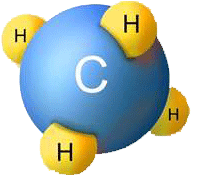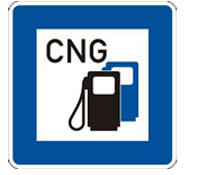Natural Gas
 Natural gas is an odorless, nontoxic, gaseous mixture of hydrocarbons—predominantly methane (CH4). Natural gas delivered through the pipeline system also contains additional hydrocarbons, such as ethane, propane, nitrogen, helium, carbon dioxide, hydrogen sulfide, and water vapor.
Natural gas is an odorless, nontoxic, gaseous mixture of hydrocarbons—predominantly methane (CH4). Natural gas delivered through the pipeline system also contains additional hydrocarbons, such as ethane, propane, nitrogen, helium, carbon dioxide, hydrogen sulfide, and water vapor.
Natural gas is primarily extracted from gas and oil wells, while smaller amounts can be made from supplemental sources, such as biomass and coal. Gas trapped in subsurface porous rock reservoirs is extracted through drilling. Gas streams produced from oil and gas reservoirs contain natural gas, liquids, and other materials. Also, advances in hydraulic fracturing technologies have enabled access to large volumes of natural gas from shale formations.
In recent years, 80% to 90% of the natural gas used in the United States was domestically produced and accounts for about a quarter of the energy used in the United States. About one-third goes to residential and commercial uses, such as heating and cooking; one-third to industrial uses; and one-third to electric power production. Although natural gas is a clean-burning alternative fuel that has long been used to power natural gas vehicles, only about one-tenth of 1% is used for transportation fuel.
CNG (Compressed Natural Gas)
 Natural gas is a clean-burning, domestically-produced, relatively low-priced, and widely available alternative transportation fuel. Although its combustion does produce greenhouse gases, it is a more environmentally clean alternative than all other hydrocarbon fuels, and it is much safer than other fuels in the event of a spill (natural gas is lighter than air and disperses quickly when released).
Natural gas is a clean-burning, domestically-produced, relatively low-priced, and widely available alternative transportation fuel. Although its combustion does produce greenhouse gases, it is a more environmentally clean alternative than all other hydrocarbon fuels, and it is much safer than other fuels in the event of a spill (natural gas is lighter than air and disperses quickly when released).
Because of its gaseous nature, natural gas must be stored onboard a vehicle in a compressed state. To provide adequate driving range, the natural gas is compressed to less than 1% of the volume it occupies at standard atmospheric pressure. This compressed natural gas (CNG) is stored onboard a vehicle in cylinders at a pressure of 3,000 to 3,600 pounds per square inch (psi).
A CNG-powered vehicle gets about the same fuel economy as a conventional gasoline vehicle on a gasoline gallon equivalent (GGE) basis. A GGE equals about 5.66 pounds of CNG. CNG is used in light-, medium-, and heavy-duty vehicle applications.
Natural gas is sold in units of diesel or gasoline gallon equivalents based on the energy content of a gallon of gasoline or diesel fuel.
